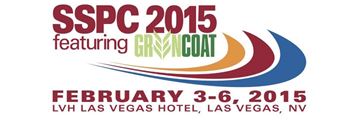Search
SSPC Conference Papers
Legacy SSPC Conference Papers
View as
Sort by
Display
per page
Benjamin Franklin Bridge Painting Project
Product Number:
41206-262-SG
Publication Date:
2006
$20.00
Best Practices for Maintenance of Abrasive Blasting Equipment
Product Number:
41206-239-SG
Publication Date:
2006
$20.00
Bio Based Waterborne Floor Coatings with Enhanced Flow, Appearance, and Early Hardness Development
Product Number:
41215-900-SG
Publication Date:
2015
$20.00
Bioprefered Federal Biobased Products Preferred Procurement Program
Product Number:
41211-644-SG
Publication Date:
2011
$20.00
Blasting and Painting the Exteror of Three Five-Million Gallon Lead-Based Paint Coated Tanks without an Enshrouding Containment
Product Number:
41211-638-SG
Publication Date:
2011
$20.00
Blasting at Long Distance. Corrosion Maintenance on the Sydney Harbour Bridge: a 30 Year Case Study
Product Number:
51220-245-SG
Publication Date:
2020
$20.00
Bob Graham Sunshine Skyway Bridge Stay Cable Painting Project - Lessons Learned
Product Number:
41209-504-SG
Publication Date:
2009
$20.00
BPA Epoxide Inorganic/Organic Coatings with nanoCarbon Additives
Product Number:
41215-933-SG
Publication Date:
2015
$20.00
Breathing the Fresh Air of Compliance: Establishing an OSHA Compliant Respiratory Protection Program
Product Number:
41215-880-SG
Publication Date:
2015
$20.00
Bridge Coating in Japan: Doing it Right the First Time
Product Number:
41213-737-SG
Publication Date:
2013
$20.00
Bridge Maintenance Painting in the Land of 10,000 Lakes MnDOT’s approach to Improving Bridge Maintenance Painting Operations
Product Number:
41215-932-SG
Publication Date:
2015
$20.00












